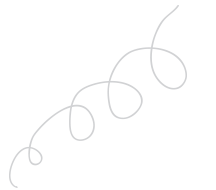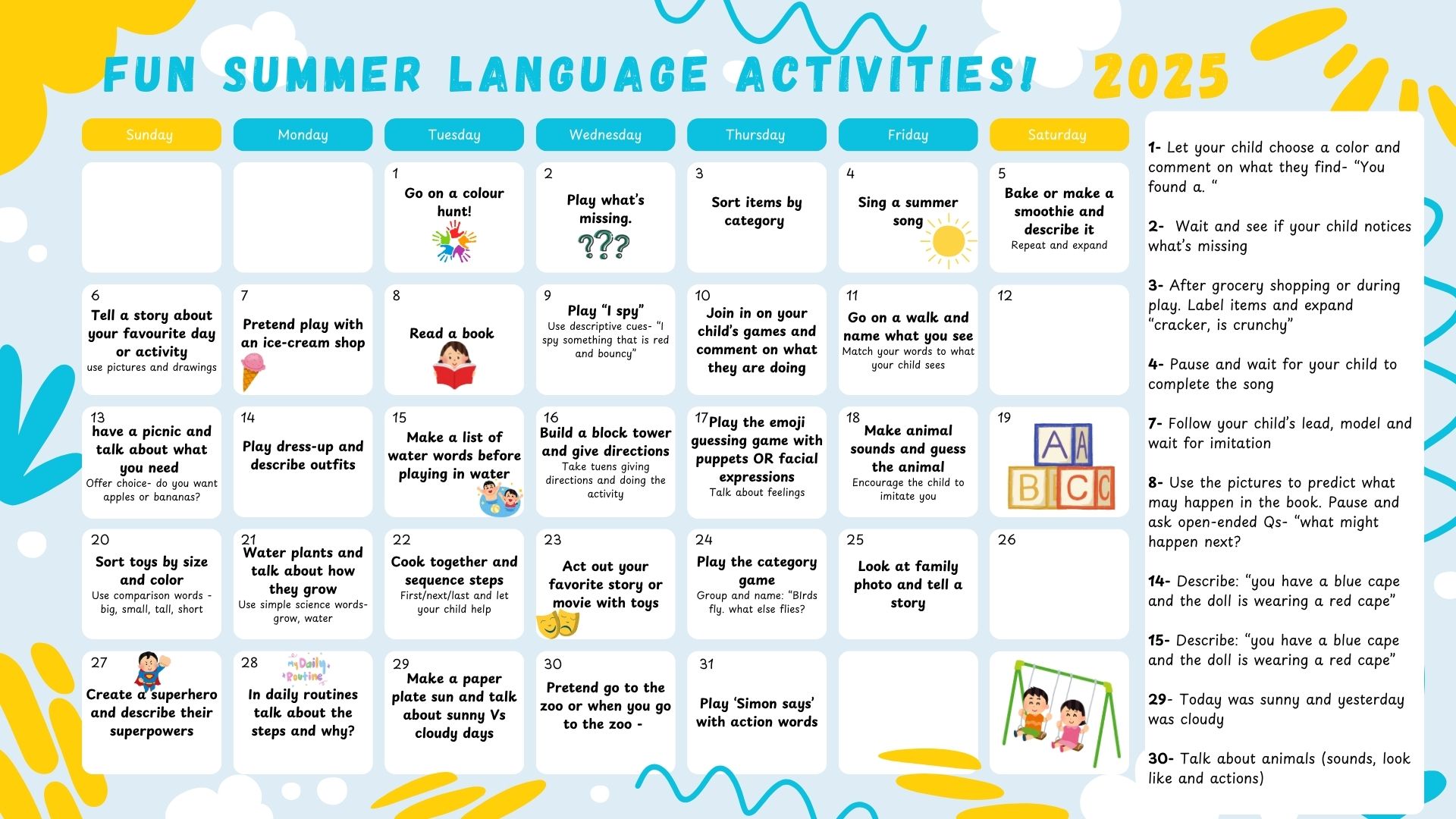

Boosting Your Child’s Language Skills This Summer: A Parent’s Guide

Sasha Benedict
Speech and Language Therapist
DHA License Number: 68677463

Language is a key tool that shapes how children interact with the world. It helps them express their thoughts and emotions, engage with others, ask questions, and discover new things. Through language, they describe what they see, build relationships, and make sense of their surroundings. As they grow, language becomes an essential part of how they play, explore, learn, and communicate their ideas and experiences.
Understanding Language Development: Step by Step
Language development is a gradual and unique process for each child. While milestones help guide progress, children develop at their own pace influenced by factors such as personality, environment, language exposure, and individual learning needs.
Here’s an overview of typical language development:
Babies (0–12 months)
In the first few months of life, babies begin developing the foundations for communication through simple yet meaningful behaviours. These early interactions are non-verbal, yet incredibly powerful. You might notice soft cooing sounds like “ahh” or “ooo,” or playful babbling such as “bababa” or “mamama.” Babies also start making eye contact, smiling in response to faces, and showing a range of facial expressions. They may begin imitating sounds or gestures they frequently see and hear. Another exciting milestone is when they start recognising familiar voices and turn their heads towards sounds. These early signs show that babies are already learning how to connect and communicate with the world around them.
Toddlers (1–3 years)
During toddlerhood, language development begins to progress rapidly. At this stage, children become more expressive and start using words to talk about what excites or interests them most. You’ll often hear them labelling objects, asking for what they want, or beginning to participate in simple back-and-forth interactions. Their speech may include single words like “mama,” “ball,” or “go,” and they gradually move towards combining words into short, meaningful phrases such as “want juice” or “baby sleep.” They may also enjoy naming familiar people, favourite toys, or parts of the body, showing growing confidence in their communication skills. This stage marks a crucial shift from simple sounds to intentional, purposeful language use.
Preschoolers (3–5 years)
By the preschool years, children’s language skills become noticeably more advanced. They begin using language not just to express needs, but to explore ideas, share experiences, and connect with others. It’s common to hear them asking lots of questions like “why,” “what,” and “how” as they try to make sense of the world around them. Their storytelling abilities also grow—they can recount events with a clear beginning, middle, and end. In conversations, preschoolers start describing what happened during their day, how they felt, or what they’re thinking, using longer and more detailed sentences. This stage reflects a deeper understanding of language as a tool for communication, imagination, and connection.
How Can You Support Language—Anytime, Anywhere!
Here are five simple tips for how you can support your child’s language development during everyday activities like cooking or driving:
- Talk Together – Narrate your actions and comment on your child’s behaviour or feelings to build word and world knowledge.
- Follow Their Lead – Focus on your child’s interests, get down to their level, and comment on what they are doing with or alongside them.
- Pause and Listen – Give your child time to respond- count silently to 10. This encourages turn-taking and provide opportunities for your child to respond back.
- Sing Songs and Rhymes – Children love music! It’s an engaging and effective tool for speech and language development. It incorporates rate, rhythm, repetition, and movement. This makes language learning fun and motivating!
- Read Often – Children enjoy bedtime reading routines. It allows parents and children to bond while building language and thinking skills. Some examples of skills children build when you read to them include:
- learning new words
- understanding sentence structure
- answering and asking questions
- telling/retelling stories using book pictures or daily experiences
- predicting outcomes
- making inferences
Make Language Learning Fun This Summer
Summer is the perfect time to foster your child’s language skills in fun and meaningful ways. Without the pressure of school routines, you can slow down and focus on playful learning.
Try these simple ideas:
- Nature walks scavenger hunts – Talk about colours, textures, and objects you see
- Cooking together – Name ingredients, describe smells and tastes, and follow simple instructions
- Pretend play – Create stories with puppets, dolls, or action figures
- Outdoor games – Use action words (run, jump, throw), and practise giving and following directions
- Create a summer journal – Let your child draw pictures and tell you what to write
Final Thoughts
Supporting your child’s language development boosts their academic success, confidence, and social skills. No matter their level of language development or skill —remember to be present, playful, and talkative.
Use the Summer Language Activity Calendar for fun daily tips to make learning part of your summer routine.

Sources:
- American Speech-Language-Hearing Association. (2023, November 1). ASHA’s developmental milestones: Birth to 5 years.
- Hart, B. (2004). What toddlers talk about. First Language, 24, 91–106.


